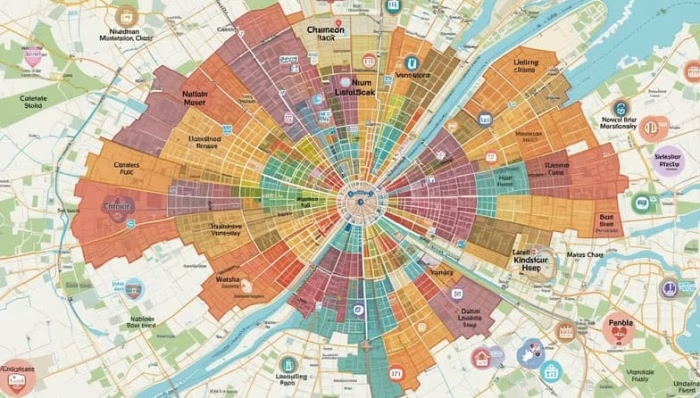In every language there are words that resonate, words that connect people because they encapsulate shared ideas and concepts. Geomarketing is one of those powerful words. It brings together two worlds that, at first glance, might seem distant: geography and marketing. Space and market. Territory and purchase decisions. People and services.
In essence, geomarketing answers three fundamental questions: where, who, and why. And most importantly, it helps us anticipate future behaviors with greater accuracy.
What Is Geomarketing in Practice?
Is it:
- A computer tool at the service of marketing?
- New analytical methods that complement existing ones?
- The integration of spatial variables into market studies?
- The visualization of data on maps?
The truth is that geomarketing is all of this—and much more. It represents the evolution toward a new discipline, just as biomedicine emerged from biology and medicine.
Thanks to GIS (Geographic Information Systems), we can now combine massive datasets with cartographic layers to uncover patterns invisible in traditional analysis. Tools like buffers (areas of influence), distance optimization, clustering, neighborhood relationships, and typological spatial analysis allow businesses and institutions to make decisions based on location, mobility, and consumer behavior.

Why Does It Matter?
The most immediate application is site selection:
- Where should I open my next store?
- How accessible is it for my customers?
- Am I closer—or farther—than my competitors?
But geomarketing goes far beyond. It helps us understand the socio-economic behavior of populations, segment markets spatially, and optimize commercial campaigns. Any data—public or private—that gains value when tied to a location can benefit from geomarketing.
A Hyper-Mobile World
Ironically, in today’s “all-digital” era, we are more territorial than ever. We travel more, shop farther from home, and use multiple modes of transport at unprecedented speeds. Think about the tools we use daily:
- Google Maps, OpenStreetMap, or Google Earth.
- Low-cost airlines and online travel platforms.
- Shopping malls, e-commerce with global reach, and GPS-enabled smartphones.
All of them reinforce a simple truth: our behaviors are rooted in geography.
The Meeting Point: Geography + Marketing
It was inevitable that these two disciplines would converge. Geomarketing doesn’t just map markets; it gives companies, institutions, and entrepreneurs the power to make smarter, data-driven decisions with a territorial perspective.

About the Author
Juan Esteban Reina (Barcelona)
Degree in Human Geography. Head of the ProdAfrica team.
Specialist in urbanism, geomarketing, and tourism. Currently leading consultancy projects in tourism, business, and commercial development, as well as promoting business links between Africa and Europe.
His passion is Africa. He firmly believes in the continent’s potential and the strength of its people to build a brighter future for generations to come.